You are here
Columbia River Gorge National Scenic Area Overview | Hiking | Rock Climbing | Mountain Biking | Windsurfing + Kitesurfing | Kayaking + Whitewater Rafting | Wildlife Viewing | Fishing | Swimming Holes + Beaches | Campgrounds + Lodging
Columbia River Gorge National Scenic Area Overview
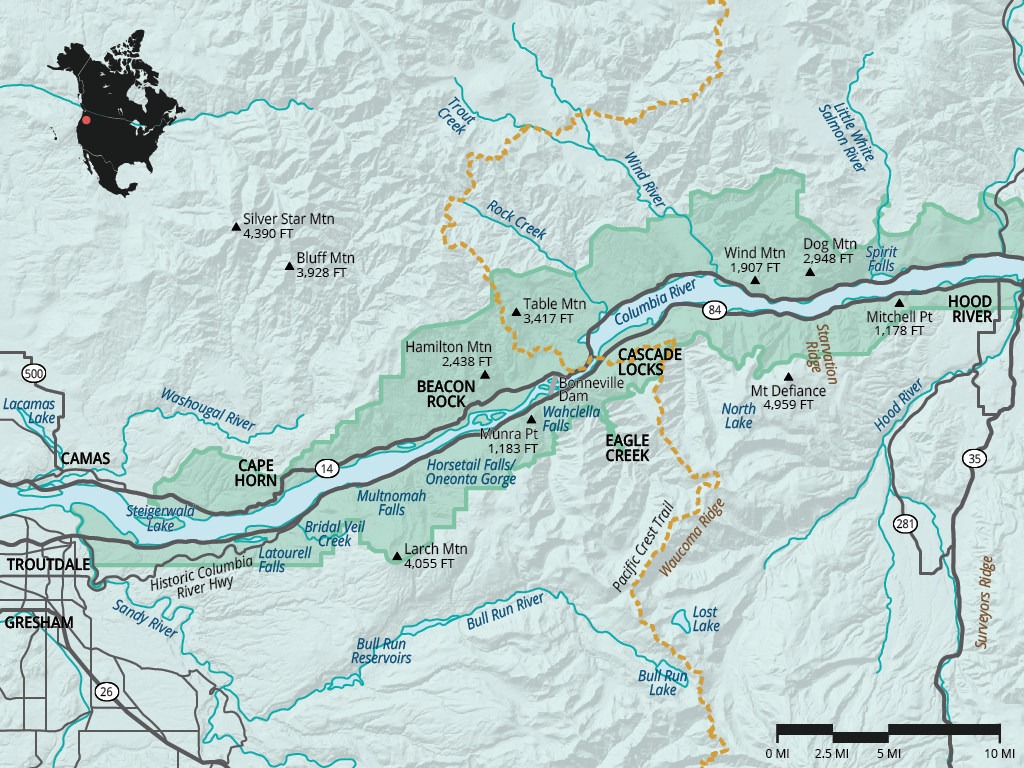
West End: Columbia River Gorge National Scenic Area Map.
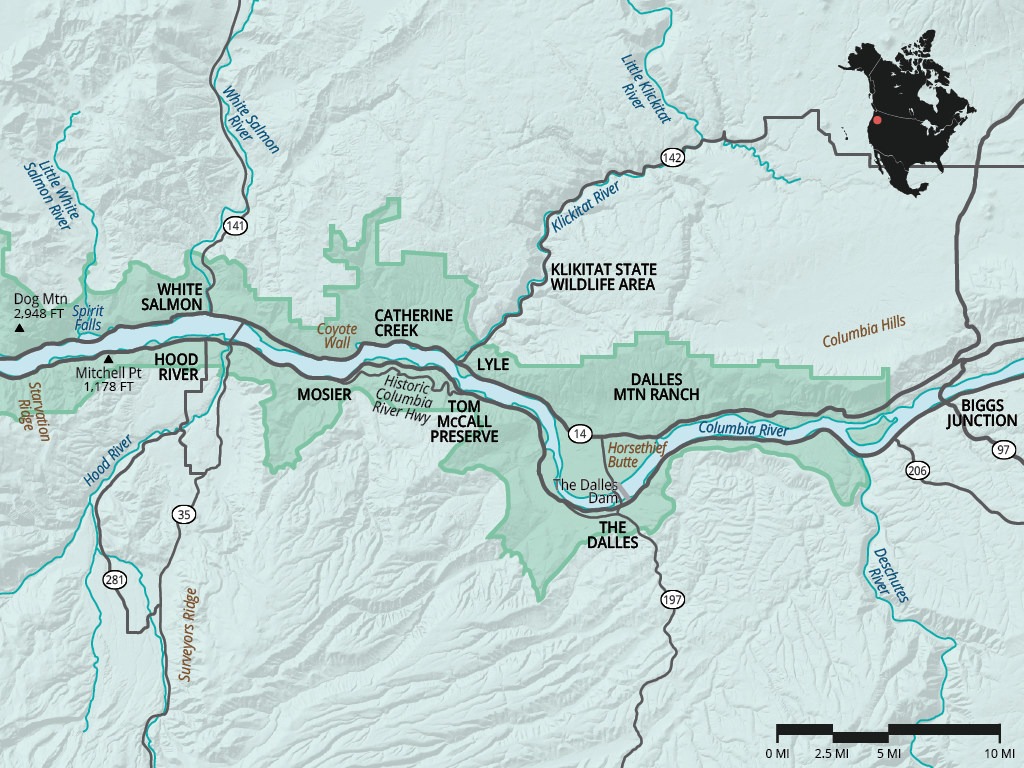
East End: Columbia River Gorge National Scenic Area Map.
Collecting water from as far east as the Rocky Mountain Continental Divide in both the United States and Canada, the Columbia River discharges more water into the Pacific Ocean than any other river in North or South America. This massive river has cut a narrow channel directly through the Cascade Range, a nearly 600-mile chain of volcanic peaks, in order to reach the Pacific. Sculpted by tremendous geological events such as the Missoula Floods, cataclysmic floods at the end of the last ice age that exposed the area's basalt layers, the Columbia River Gorge stretches roughly 80 miles from east to west, up to 10 miles from north to south, and measures up to 4,000 feet deep.
The Columbia River Gorge National Scenic Area was created in 1986 to protect the natural beauty of the Gorge. It includes both public and private land in Oregon and Washington with countless stakeholders, and it is by far the nation's most extensive National Scenic Area. Managed by the Forest Service and the Columbia River Gorge Commission, it extends 83 miles from the confluence of the Sandy River to the Deschutes River on the east side and encompasses 292,500 acres.
The Columbia River Gorge is perhaps best known for its dramatically chiseled walls, but one of the features that makes this area so unique is the stark contrast in annual precipitation between the western to eastern ends. While areas in the west end of the Gorge may receive up to 100 inches of rain annually, the east end may receive as little as 10 inches annually. This contrast is manifested in the old-growth forests and waterfalls that dominate the western portion of the Gorge and the wildflower-filled golden hills that unfold in the eastern portions. In fact, the pounding rains on the western side of the Gorge have created one of the densest concentrations of waterfalls on earth.
For those visiting from afar and those who live in the region, the Columbia River Gorge is a recreational mecca. Not only are there dozens of hikes to waterfalls, prominent peaks, and wildflower meadows, the Gorge is renowned for world-class windsurfing and kitesurfing that is fueled by the sustained winds. There are also plenty of boat ramps for salmon and sturgeon fishing, mountain biking trails (particularly on the east side), kayaking, wildlife viewing areas, beaches, swimming holes, state parks, roadside viewpoints, and numerous campgrounds and lodges to spend the night.
To get started, every first visit in the Columbia River Gorge ought to start on the Historic Columbia River Highway with a stop at the Portland Women's Forum and the Crown Point Vista House. The highway, built between 1913 and 1922, is now listed on the National Register of Historic Places as well as being a National Historic Landmark. The intermittently connected scenic highway parallels I-84 on the Oregon side of the Gorge. It passes some of the most prominent waterfalls (Latourell, Bridal Veil, Wahkeena, Multnomah, and Horsetail) on the west side and wraps around the Mosier Plateau on the Gorge's east end.
Hiking

Hiker on the Munra Point Trail. Photo by Aron Bosworth.
Hiking opportunities in the Gorge are limitless, and it can be a lot to take in, but here's a quick digest. The easiest and most waterfall-filled hikes through old-growth forests are located on the west end of the Oregon side, but these also are by far the most crowded. The Washington hikes are surprisingly less crowded (Dog Mountain being an exception) and offer the biggest vistas, but these are also some of the most strenuous. You'll want to be wary of poison oak the further east you venture, primarily in the Hood River and Mosier longitudes. Stunning wildflower-filled meadows of balsamroot and lupine can be found on most hikes on the eastern end of the Gorge in late April and early May.
Washington (west to east):
- Steigerwald Lake NWR, Gibbons Creek Wildlife Art Trail (3.1 miles, no elevation gain)
- Cape Horn Hike (7.6 miles, 1,680 feet elevation gain)
- Beacon Rock Hike (1.8 miles, 680 feet elevation gain)
- Little Hamilton Mountain (4.6 miles, 955 feet elevation gain)
- Hamilton Mountain (7.5 miles, 2,220 feet elevation gain)
- Table Mountain (9.2 miles., 3,650 feet elevation gain)
- Wind Mountain (2.5 miles, 1,600 feet elevation gain)
- Dog Mountain (7.2 miles, 2,900 feet elevation gain)
- Augspurger Mountain (15.8 miles, 4,150 feet elevation gain)
- Spirit Falls (0.7 miles, 520 feet elevation gain)
- Jewett Creek Watershed (4 miles, 800 feet elevation gain)
- Coyote Wall (5.4 miles, 1,700 feet elevation gain)
- Catherine Creek (2.9 miles, 600 feet elevation gain)
- Klickitat Trail via Lyle Trailhead (8.0 miles, 125 feet elevation gain)
- Lyle Cherry Orchard (4.8 miles, 1,060 feet elevation gain)
- Horsethief Butte (1.0 mile, 120 feet elevation gain)
- Dalles Mountain (8.0 miles, 2,480 feet elevation gain)
Oregon (west to east):
- Latourell Falls (2.4 miles, 520 feet elevation gain)
- Bridal Veil Falls (1.3 miles, 100 feet elevation gain)
- Angels Rest (4.1 miles, 1,371 feet elevation gain)
- Angels Rest + Fox Glove Way (7.0 miles, 2,080 feet elevation gain)
- Wahkeena Falls/Multnomah Falls Loop (5.2 miles, 1,700 feet elevation gain)
- Multnomah Falls + Creek (5.5 miles, 1,100 feet elevation gain)
- Larch Mountain Trail (13.6 miles, 4,010 feet elevation gain)
- Oneonta Gorge (1.0 mile, 20 feet elevation gain)
- Horsetail + Ponytail Falls (4.0 miles, 600 feet elevation gain)
- Rock of Ages Loop (9.6 miles, 2,960 feet elevation gain)
- Elowah Falls (2.0 miles, 600 feet elevation gain)
- Nesmith Point (10.6 miles, 3,800 feet elevation gain)
- Munra Point (6.8 miles, 1,880 feet elevation gain)
- Wahclella Falls (2.0 miles, 300 feet elevation gain)
- Wauna Point (10.6 miles, 2,590 feet elevation gain)
- Dublin Lake (13.8 miles, 3,780 feet elevation gain)
- Tanner Butte (19.0 miles, 4,800 feet elevation gain)
- Eagle Creek Hike to Punchbowl Falls (4.2 miles, 270 feet elevation gain)
- Eagle Creek Hike to Tunnel Falls (11.8 miles, 1,200 feet elevation gain)
- Ruckel Ridge Loop (9.0 miles, 3,700 feet elevation gain)
- Dry Creek Falls (4.4 miles, 710 feet elevation gain)
- Herman Creek Pinnacles (6.0 miles, 950 feet elevation gain)
- Pacific Crest Falls (4.0 miles, 600 feet elevation gain)
- Indian Point (6.8 miles, 2,690 feet elevation gain)
- Gorge Trail #400 (8.0 miles, 760 feet elevation gain)
- North Lake via Wyeth Trail (12.8 miles, 4,220 feet elevation gain)
- Starvation Ridge Waterfall Loop Hike (3.6 miles, 700 feet elevation gain)
- Mount Defiance (12.0 miles, 5,000 feet elevation gain)
- Mitchell Point (1.0 mile, 800 feet elevation gain)
- Historic Columbia River Highway State Trail via Mark O. Hatfield East Trailhead (9.6 miles, 120 feet elevation gain)
- Mosier Plateau Trail Hike (3.1 miles, 1,100 feet elevation gain)
- Rowena Plateau Loop (1.0 mile, 100 feet elevation gain)
- Tom McCall Point (3.4 miles, 1,200 feet elevation gain)
Rock Climbing

Climbers at Indian Point. Photo by Joshua Lupkin.
Although many of the cliffs that line the Gorge are composed of crumbling basalt that is unsuitable for climbing, several developed crags are deliciously challenging and prompt thoughtful and imaginative movement. From the tall, bustling, lycra-filled outdoor gym that is Ozone to the sprawling desolation that is Horsethief Butte, the Gorge provides a crag for climbers of every persuasion.
Though rock quality and style varies greatly, the epic and sweeping views of the Gorge from the top of a pitch never cease to amaze. The expansive and rolling hills suggest that undeveloped crags await some intrepid exploration and a creative perspective.
Washington (west to east):
- Ozone
- Cigar Rock (bouldering)
- Beacon Rock
- The Bypass, also known as The Dump (sport)
- Horsethief Butte
Oregon (west to east):
- Broughton Bluffs, Lewis + Clark State Recreation Area.
- Rooster Rock
- Indian Point
- Cascade Boulders (bouldering)
Mountain Biking
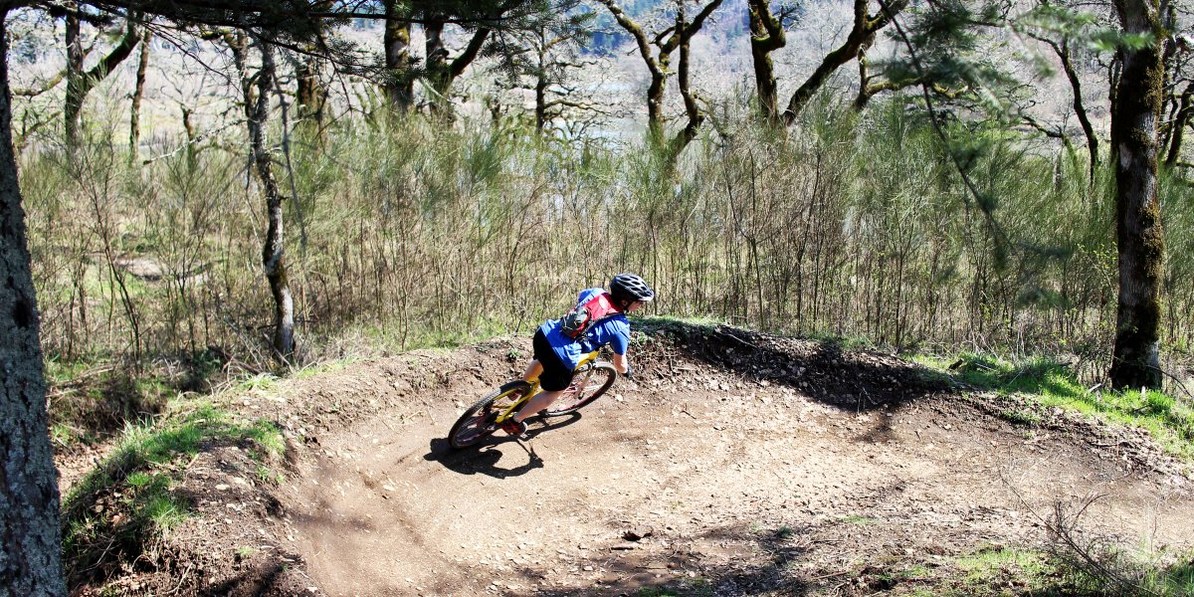
Mountain biker on the trails at Cascade Locks. Photo by Alex Zimmerman.
Not nearly as accepted or ubiquitous as hiking trails, the most popular mountain biking accessible trails and networks in the Gorge are relatively isolated to the Washington side of the river and predominantly east of White Salmon, but those that exist are heart-pounding and will keep you coming back for more. Venturing outside of the boundaries of the National Scenic Area, predominantly in Oregon, more trails become accessible, such as Waucoma Ridge or Surveyor's Ridge.
Washington (west to east):
- Hardy Ridge Trail, Beacon Rock State Park (9 miles)
- Nestor Peak/Buck Creek Trails (12 miles)
- Hospital Hill (12 miles)
- Syncline (also known as the Coyote Wall for hikers)
- Klickitat River Trail
Oregon (west to east):
- Cascade Locks Trails (2 miles)
- Gorge Trail #400
- Post Canyon Trails (15 miles)
- Historic Columbia River Highway State Trail (4.8 miles, paved)
- The Dalles Riverfront Trail (10 miles, paved)
Oregon (Hood River Valley)
- Waucoma Ridge Trails (19.2 miles)
- The Whoopdee Trail (10 miles)
- Surveyor's Ridge/Dog River Trail (24.7 miles)
Windsurfing + Kitesurfing

Kitesurfers on the Columbia River outside of Hood River. Photo by Tyson Gillard.
With highly differentiated air pressure on both the east and west ends of the Cascade Range, the Columbia River Gorge is a 4,000-foot deep wind tunnel where sustained winds of 35 mph are common. Although the wind can be mildly annoying at times, it has also put the Gorge on the map as a world-renowned destination for windsurfing and kitesurfing, and Hood River is most certainly its capital city.
For a complete guide of all of the best locations, visit our friends at Columbia Gorge Windsurfing Association.
Kayaking + Whitewater Rafting
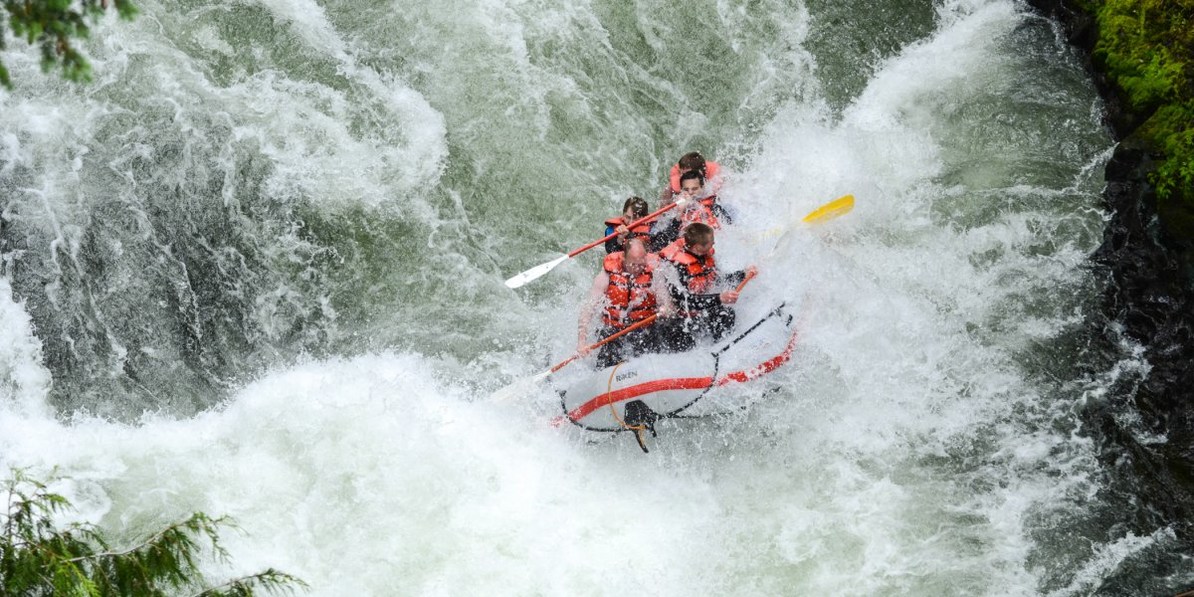
White water rafters on the White Salmon River. Photo by Adam Elliott.
Although water flow is nearly boundless during the winter months, most of the creeks that flow into the Columbia River Gorge are either too short or too shallow to warrant a float. But on the few that do match up with a good boating profile, the kayaking and whitewater rafting is world-class. High annual rainfall and steep elevation drops make the White Salmon, Little White Salmon, and Wind Rivers on the Washington side some of the most challenging and legendary rivers to runs in the nation. Popular runs from west to east include:
- Wind River, High Bridge to Shipherds Falls (Class IV+)
- Little White Salmon River, Willard to Columbia River (Class V)
- White Salmon River, Green Truss to BZ Corner (Class V)
- White Salmon River, BZ Corner to Husum Falls (Class III+)
- Klickitat River (Class II)
For those who don't own their own equipment or don't feel like dropping off a waterfall is a good idea, plenty of guides are available, including:
Wildlife Viewing
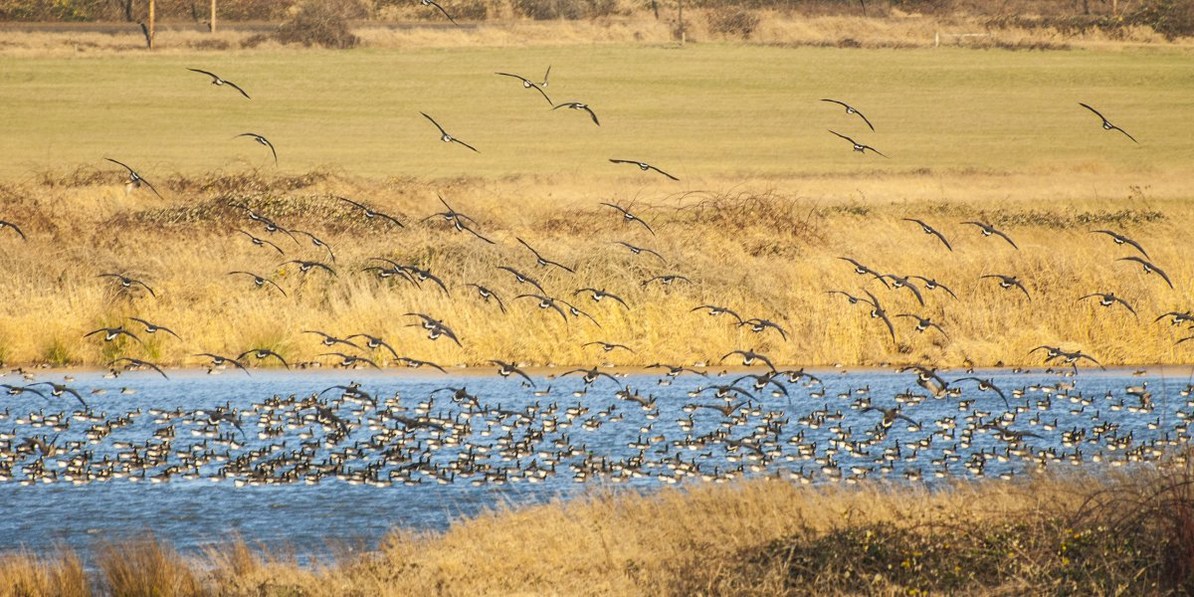
Canada geese (Branta canadensis) in Scaup Pond at Steigerwald National Wildlife Refuge. Photo by Tyson Gillard.
Although the Columbia River Gorge doesn't have the same level of nature and wildlife habitat protection as a Wilderness Area designation, wildlife viewing opportunities are still plentiful. Perhaps most noteworthy are the spring and fall salmon runs.
- Steigerwald Lake National Wildlife Refuge (waterfowl, song birds, raptors, amphibians)
- Franz Lake National Wildlife Refuge (waterfowl, song birds, raptors, amphibians)
- Bradford Island Visitor Center + Fish Ladder (salmon)
- Eagle Creek (salmon)
Fishing
As the largest river to flow into the Pacific Ocean in the western hemisphere, the Columbia River has an abundance of fishing opportunities. Salmon, steelhead, and river trout can be found year round with a particular abundance during the spring and fall runs, and legendary sturgeon are primarily found below Bonneville Dam. Shad, walleye, panfish, largemouth and smallmouth bass can all be found in the smaller tributaries and lakes throughout the Columbia River Gorge.
For a comprehensive guide to some of the best fishing spots in the area, view the recommendations by our friends at Skamania Lodge.
And don't forget to check into fishing permits for Washington and Oregon.
Swimming Holes + Beaches

Cliff jumping at Rowland Lake. Photo by Tyson Gillard.
When the temperatures soar above 80 degrees during the summer months, there can be nothing more refreshing than to set up camp along a river or lake and take the plunge into refreshing and cool waters. The Gorge offers plenty of opportunities for such bathing.
Washington (west to east):
- Home Valley Park (beach, roped off swimming area)
- Rowland Lake (picnic area, cliff jumping, warm water)
- Horsethief Lake at Columbia Hills Historic State Park (picnic area, warm water)
Oregon (west to east)
- Sandy River at Lewis + Clark State Park (sandy beach)
- Rooster Rock State Park (beach)
- Benson State Recreation Area (picnic area)
- Viento State Park (picnic area, beach)
- Hood River Waterfront Park (beach, roped-off swimming area)
- The Spit + Hood River Event Site (sandy beach)
- Koberg Beach State Park (beach)
- Mayer State Park (picnic area)
- Deschutes River State Recreation Area (warm water)
Campgrounds + Lodging
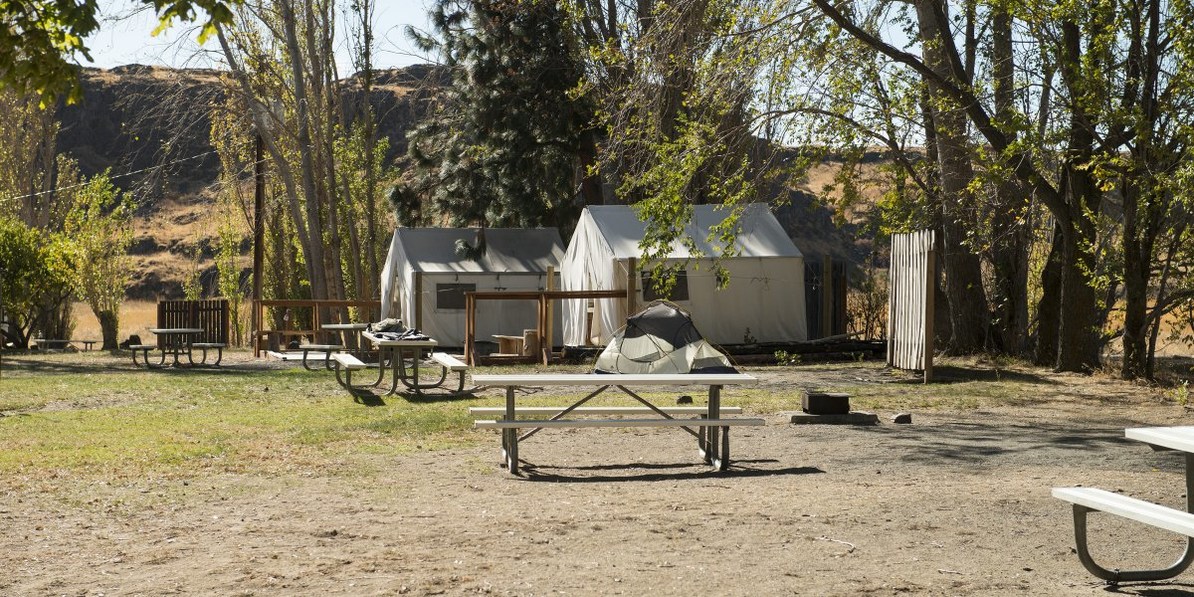
Campground at Columbia Hills Historic State Park adjacent to Horsethief Lake. Photo by Tyson Gillard.
Although the Gorge has no shortage of campgrounds, it is certainly one aspect of the area that leaves much to be desired. On both the Oregon and Washington side of the river, nearly all of the campgrounds are located within a short distance of the railroad, where it is common to hear trains passing throughout the night. Worse yet, on the Oregon side, white sound radiating from I-84 exacerbates the issue. Viento and Memaloose, for instance, are flanked by the railroad and freeway on both sides. Beacon Rock State Park Campground on the Washington side is surely the quietest, and therefore most desired, campground in Gorge.
As for more civilized accommodations, there are plenty of incredible and iconic lodges in the region where you can rest your head. A handful of the best are listed below.
Washington (west to east):
- Beacon Rock State Park Campground: (RV hookups)
- Beacon Rock State Park Group Campground: (adirondack shelters, up to 200 people)
- Bonneville Hot Springs Resort + Spa
- Stevenson:
- Skamania Lodge
- Skamania County Fairgrounds/Rock Creek Park
- Columbia Gorge Riverside Lodge (cabins)
- The Resort at Skamania Coves (cabins)
- Carson Hot Springs Resort
- Home Valley Park Campground
- Timberlake Campground + RV Park (RV hookups)
- White Salmon:
- Inn of the White Salmon
- Bridge RV Park + Campground (RV hookups)
- Klickitat River Campsite (just outside NSA boundary)
- Klickitat River Campground (just outside NSA boundary)
- Columbia Hills Historic State Park Campground: (RV hookups, platform tents)
Oregon (west to east):
- Bridal Veil Lodge Bed + Breakfast
- Ainsworth State Park Campground (RV hookups)
- Eagle Creek Campground
- Cascade Locks Marine Park (RV hookups)
- Herman Creek Campground
- Wyeth Campground
- Viento State Park Campground (RV hookups)
- Hood River:
- Columbia Gorge Hotel
- Lakecliff Bed + Breakfast
- Hood River Hostel
- Inn at the Gorge Bed + Breakfast
- Hood River Hotel
- Memaloose State Park Campground (RV hookups)
- Deschutes River State Recreation Area Campground (RV hookups, just outside NSA boundary)

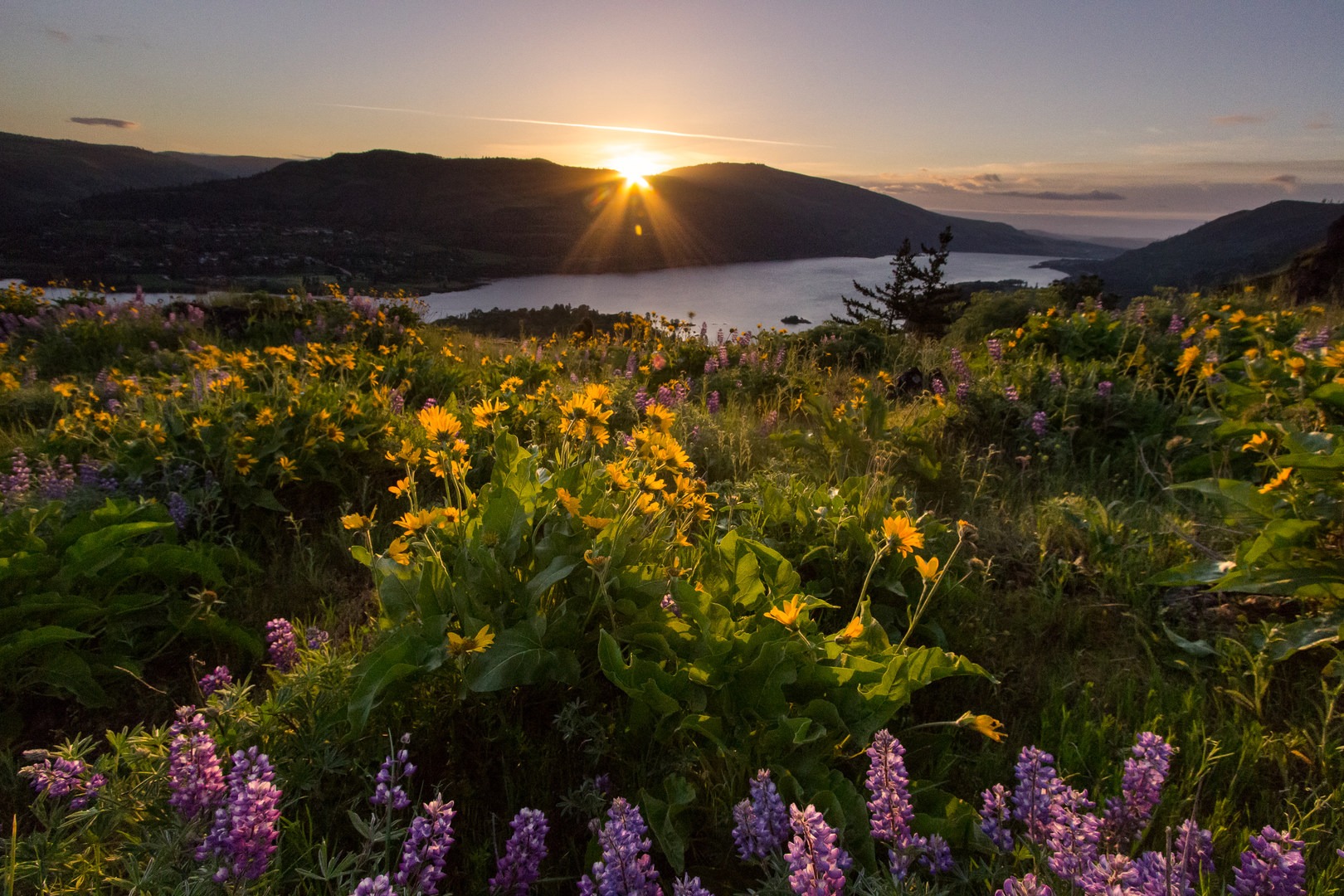
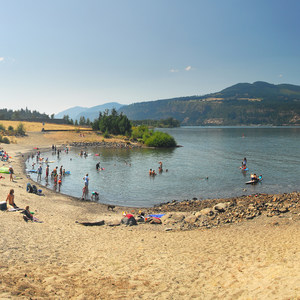


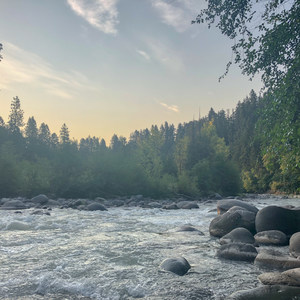
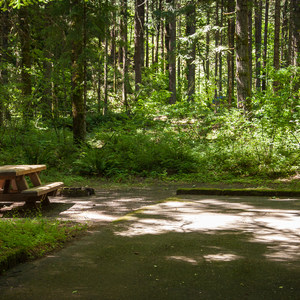



Comments
Sign In and share them.